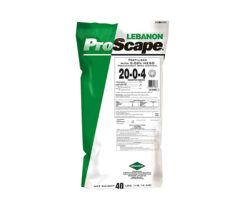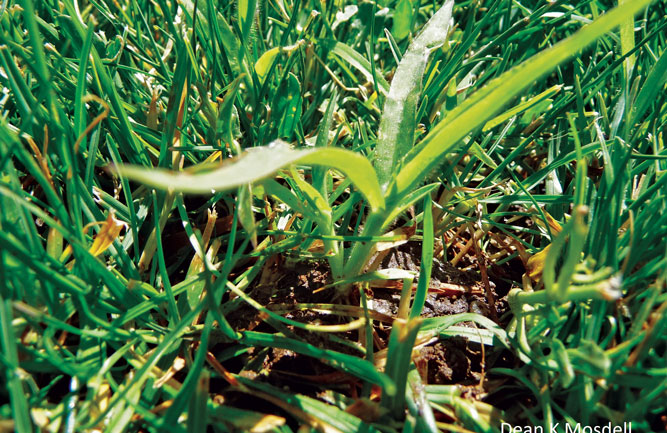Fall applied preemergence herbicides for crabgrass control in the North
Q: What are the benefits of a preemergence herbicide application in the fall for crabgrass control?
The primary benefit is shifting work that is normally done in spring to fall. There is more time available to apply the preemergence herbicide to rough or fairways without the time crunch that often occurs in spring.
From an agronomic perspective, adequate crabgrass control can be expected with a single preemergence herbicide application in fall. A superintendent should plan on making a second (sequential) preemergence herbicide application in late spring to achieve the highest crabgrass control.
Q: Are there situations where a preemergence herbicide should not be applied in fall?
Yes. If winterkill is a perennial risk, do not apply preemergence herbicides in the fall because they will make reestablishing turf in the spring, from seed, much harder to do. While our research shows that aggressive slit-seeding in spring using wide verticut blades (at least 3/16 inch wide) can be successful, the recovery process is slower if preemergence herbicides have been applied the previous fall.
Also, I only recommend a fall preemergence herbicide application if it is followed by a second (sequential) application in spring, about four weeks after crabgrass has begun to germinate.
Q: When should the preemergence herbicide be applied in fall?
The answer depends on the formulation of the preemergence herbicide. If the preemergence herbicide is formulated on a granular fertilizer, the preemergence plus fertilizer product should be applied when the last granular fertilizer application is normally made. It is essential that the preemergence herbicide plus fertilizer product is watered in with 0.1 to 0.2 inches of water as soon after application as possible and certainly within 24 hours, to move the herbicide into the soil and minimize UV light degradation.
If the last granular fertilizer application is made after mid-October, recent research shows that nitrogen use efficiency drops drastically at this time due to low water use rates by the turf. Most nitrogen uptake by turf occurs along with the water that the turf plants take up, so if the turf takes up little water, little nitrogen is taken up.
If the preemergence herbicide is applied as a liquid, the application should take place when soil temperatures are in the 50 to 55 degrees Fahrenheit range or lower, when microbial activity is declining. Again, be sure to water in this application with 0.1 to 0.2 inches of water as soon after application as possible.
Q: What rate do you recommend for a fall preemergence herbicide application?
The fall preemergence herbicide should be applied at half the high label rate and the second application, made in spring about four weeks after crabgrass seed has germinated, should also be made at half the high label rate. In my experience, a single preemergence application in fall, regardless of rate, is rarely sufficient to provide acceptable season-long crabgrass control in most locations.










